Caveman Golf Created on 11/1/2004 12:00:00 AM
 First things first: If you're a caveman golfer, nothing I say is going to change the way you play the game.
First things first: If you're a caveman golfer, nothing I say is going to change the way you play the game.I could spend the next few pages lecturing about how to play smarter, but I've seen firsthand the joy you get from hitting an entire bucket of range balls with your driver.
So I'll skip the course-management speech and get right to what you want to know. If you want some tips on how to back up a ball on the green, how to hit Phil Mickelson's flop shot and how to pure a 1-iron, I'll show you all the essentials to playing caveman golf. 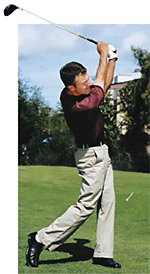
To all non-cavemen: Go ahead and take a peek at these tips, too. I'm encouraging you to try this brand of carefree golf, even for a day. You'll have loads of fun.
Go ahead, hit the Big Stick
I'm guessing if you spent $500 on that 400-cubic-centimeter state-of-the-art driver, you probably want to hit it as often as you can. Just remember two things:
(1) Tee up the ball on the side of the tee box that gives you the most fairway to work with for your ball flight. If you hit power fades (cavemen don't slice) then tee up on the far right side.
(2) Tee the ball higher and hit up on the ball with a sweeping swing from low to high.
 Flop it whenever you can
Flop it whenever you can
Phil Mickelson is to blame for this temptation. You've seen him hit the flop shot, and now you want to do the same. Well, you can hit this shot only if it's possible to slide the club (typically a lob wedge) under the ball. If it's a tight fairway or hardpan lie, don't bother. So, from a fluffly lie, play the ball forward in your stance and open the clubface so the back of the club lies flat on the ground. Now take your grip. When you swing, the key is to make a very shallow approach into the ball with a swing that accelerates through impact. Know that the harder you swing, the higher the ball will fly, but the distance you gain won't be significant. Cavemen always make a full swing for the high, soft lob.
Where eagles dare: How to attack a par 5
If you're going for the green in two (and you always want to on a par 5), at least play away from greenside trouble. Even tour pros aren't accurate enough to go for the flag from 250 yards out. Aim for the fattest, safest portion of the green. If you miss the shot, you don't want to be left with very little green between you and the pin. This is called being short-sided. Augusta National's 15th hole (shown below) is a classic example. Even cavemen use the bailout area on the right side of the green.
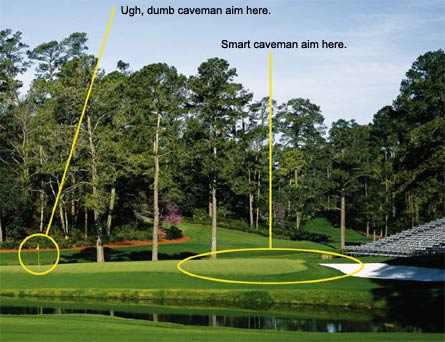
Caveman math: The shortest distance
between two points ...
Of course you're going to cut off the dogleg. The fairway might be right in front of you, but the green is over THERE.
To take it over the trees, you need to hit the driver high and far. My advice is to carry the longest tees you can find—right up to the limit of four inches. You also need to increase your launch angle: Tee the ball off the outside of your left foot, tilt your shoulders so the left is higher than the right and put 60 percent of your weight on the right foot. Imagine a pterodactyl hovering over the spot on the dogleg you want to carry, and try to knock it out of the sky. (Hey, it's extinct anyway.)

 Backing the ball up
Backing the ball up
Backspin is the function of crisp, downward contact, loft of the club and clubhead speed. Playing a ball with a high spin rate helps, too. The higher the loft on the club and the faster you swing, the easier it is to back it up. But you must make solid contact with the ball first and the ground second.
Proving the 90-percent air theory
There's plenty of room to pitch back to the fairway, but you can see that one sliver of daylight between your ball and the green. To pull off a miracle shot through the trees (see below), the one thing you have to do is forget about mechanics and focus completely on the escape route. It helps to picture the ball flying through the gap before you hit the shot.
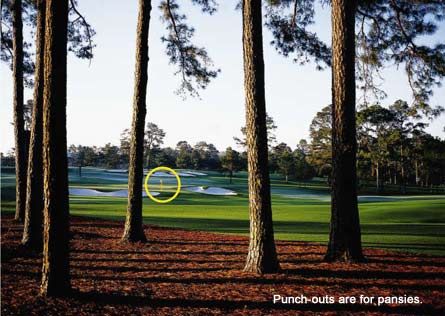
How a caveman draws the ball
The right-to-left swing shape is one many golfers fall in love with. The best way to learn to hit a draw is to visualize that you are playing handball. To curve the ball left you have to hit the ball with the palm of your right hand facing the target at impact and then turning left and down as the hand swings through to the finish position. Now, when you hold the club, visualize your right hand making the same motion (see below).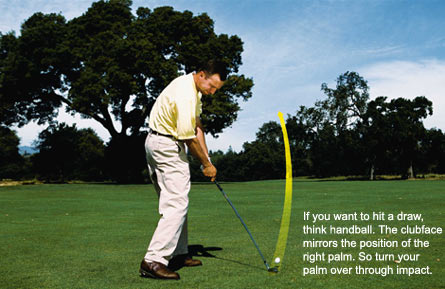

The 1-iron: primitive yet lethal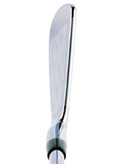
Contrary to some reports, the 1-iron is not extinct. Cavemen love the challenge of hitting it. As you do with the driver, you need to swing this club with a sweeping motion. Think shallow divot hole. To practice the swing, hit shots from a sidehill lie with the ball slightly above your feet. Make a full, unrushed backswing to give you time to square the clubface at impact. Don't try to scoop the ball into the air.
Photos (from top) Zander (headshot): Dom Furore • Zander, Mickelson: J.D. Cuban • Augusta 15th: Stephen Szurlej • balls: Joey Terrill • Augusta: Stephen Szurlej • Zander: Dom Furore (4) • 1-iron: Jim Herity
Golf Digest November 2004

